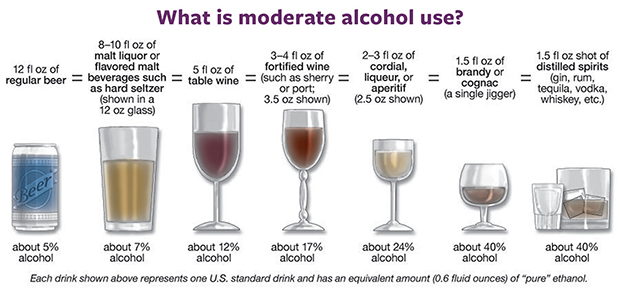What is Alcohol? Harms of Alcoholic Beverages
The Complexities of Alcohol: Exploring Its Effects, Culture, and Impact
Introduction:
Alcohol, a ubiquitous substance in human societies throughout history, holds a multifaceted role in our lives. From its cultural significance to its physiological effects, alcohol encompasses a wide array of dimensions that merit exploration and understanding. In this article, we delve into the complexities of alcohol, examining its effects on individuals and societies, its cultural and social significance, as well as its broader impact on public health and well-being.
The Physiology of Alcohol:
Alcohol, chemically known as ethanol, is a psychoactive substance that acts on the central nervous system, producing a range of effects on cognition, mood, and behavior. Upon consumption, alcohol is rapidly absorbed into the bloodstream, where it begins to exert its effects by interacting with neurotransmitter systems in the brain. These effects can vary depending on factors such as dosage, individual tolerance, and genetic predisposition.
Moderate alcohol consumption has been associated with various physiological effects, including relaxation, euphoria, and decreased inhibitions. However, excessive or chronic alcohol consumption can lead to a myriad of adverse health outcomes, ranging from liver disease and cardiovascular disorders to neurological impairment and addiction.
Cultural and Social Significance:
Alcohol plays a prominent role in many cultures around the world, serving as a focal point for social gatherings, celebrations, and rituals. From the wine-drinking traditions of Mediterranean cultures to the beer festivals of Germany and the sake ceremonies of Japan, alcohol is deeply intertwined with cultural identity and heritage.
Moreover, alcohol consumption often carries social significance, serving as a means of bonding, communication, and social lubrication. In many societies, sharing a drink with friends or colleagues is considered a gesture of hospitality and camaraderie, reinforcing social ties and fostering interpersonal relationships.
However, alongside its celebratory and social aspects, alcohol consumption can also give rise to social problems such as alcohol-related violence, drunk driving, and public disorder. The misuse of alcohol can strain relationships, impair judgment, and contribute to a range of societal issues, underscoring the need for responsible drinking practices and effective alcohol policies.
Public Health Implications:
The public health impact of alcohol consumption is significant, with implications for both individual well-being and population health. Excessive alcohol consumption is a leading risk factor for a wide range of health conditions, including liver cirrhosis, certain cancers, and mental health disorders such as depression and anxiety.
Furthermore, alcohol-related harm extends beyond the individual to encompass broader societal costs, including healthcare expenditures, lost productivity, and the burden on public services. Addressing alcohol-related harm requires a comprehensive approach that encompasses prevention, education, and policy interventions aimed at reducing alcohol consumption and mitigating its adverse consequences.
Conclusion:
Alcohol is a complex and multifaceted substance that holds both cultural significance and public health implications. While moderate alcohol consumption may be enjoyed responsibly by many individuals, the misuse of alcohol can have serious consequences for individuals, families, and communities alike. By understanding the physiological, cultural, and societal dimensions of alcohol, we can work towards promoting responsible drinking behaviors and fostering healthier, safer societies for all.
The Detrimental Effects of Alcohol: Understanding its Impact on Health and Society
Introduction:
Alcohol consumption is deeply ingrained in societies worldwide, often associated with socializing, celebrations, and relaxation. However, beneath the surface of conviviality lies a darker reality: the significant harm caused by excessive or irresponsible alcohol consumption. In this article, we delve into the detrimental effects of alcohol on both individual health and society as a whole, highlighting the pervasive impact of alcohol-related harm and the urgent need for effective interventions.
Physiological Impact on Health:
Excessive alcohol consumption poses a myriad of health risks, affecting virtually every organ system in the body. One of the most well-known consequences of heavy drinking is liver disease, including fatty liver, alcoholic hepatitis, and cirrhosis. Alcohol-induced liver damage can progress silently, leading to irreversible scarring and impaired liver function.
Moreover, alcohol consumption is a major risk factor for cardiovascular disease, increasing the likelihood of hypertension, stroke, and cardiomyopathy. Chronic heavy drinking can also weaken the immune system, making individuals more susceptible to infections and illnesses.
Beyond physical health, alcohol abuse takes a toll on mental well-being, contributing to mood disorders such as depression and anxiety. Excessive alcohol consumption can exacerbate existing mental health conditions and impair cognitive function, leading to memory loss, impaired judgment, and diminished decision-making abilities.
Social and Economic Impact:
The detrimental effects of alcohol extend far beyond individual health, permeating into broader societal realms. Alcohol-related harm is a significant driver of social problems such as violence, crime, and family dysfunction. Studies have shown a strong correlation between alcohol consumption and interpersonal violence, including domestic violence, assault, and homicide.
Furthermore, alcohol abuse places a substantial burden on healthcare systems and public services, with significant economic costs. The direct healthcare costs associated with treating alcohol-related conditions, along with indirect costs such as lost productivity and absenteeism, place a strain on already overstretched resources.
Alcohol-related harm also has profound implications for public safety, particularly concerning drunk driving and road traffic accidents. Impaired judgment and motor coordination resulting from alcohol consumption increase the risk of accidents, injuries, and fatalities on the roads, posing a significant public health concern.
Addressing the Problem:
Effective strategies for reducing alcohol-related harm require a multifaceted approach that addresses both individual behavior and broader societal factors. Public health initiatives aimed at promoting responsible drinking behaviors, raising awareness of the risks associated with alcohol consumption, and providing support and resources for those struggling with alcohol abuse are essential components of prevention efforts.
Additionally, policy interventions such as taxation, regulation of alcohol advertising and marketing, and restrictions on availability can help curb excessive alcohol consumption and mitigate its adverse consequences. Evidence-based interventions, coupled with robust enforcement measures, are crucial for reducing the societal burden of alcohol-related harm and promoting healthier communities.
Conclusion:
Alcohol consumption, when enjoyed in moderation, may hold social and cultural significance for many individuals. However, the detrimental effects of excessive alcohol consumption on health, society, and the economy are undeniable. By understanding the multifaceted nature of alcohol-related harm and implementing comprehensive strategies for prevention and intervention, we can work towards creating safer, healthier communities for all.
Exploring Alcoholic Beverages: A Comprehensive Analysis of Types, Culture, and Consumption
Introduction:
Alcoholic beverages have been an integral part of human culture for millennia, playing diverse roles in social, religious, and culinary contexts. From ancient rituals to modern-day celebrations, the consumption of alcohol spans cultures and continents, reflecting a rich tapestry of traditions and practices. In this article, we embark on a journey through the world of alcoholic beverages, exploring their varied types, cultural significance, and patterns of consumption.
Types of Alcoholic Beverages:
Alcoholic beverages encompass a wide array of fermented and distilled drinks, each with its unique production methods, ingredients, and flavor profiles. Some of the most common types of alcoholic beverages include:
- Beer: Beer is one of the oldest and most widely consumed alcoholic beverages worldwide, brewed from malted grains such as barley, wheat, or rye. The brewing process involves fermentation of sugars by yeast, resulting in a carbonated beverage with varying levels of bitterness, sweetness, and alcohol content.
- Wine: Wine is produced by fermenting crushed grapes or other fruits, yielding a beverage that ranges in flavor from dry to sweet and in color from white to red or rosé. Different grape varieties, fermentation techniques, and aging processes contribute to the diverse range of wines available, each with its distinctive characteristics and terroir.
- Spirits: Spirits, also known as hard liquor or distilled beverages, are produced through the distillation of fermented grains, fruits, or vegetables. Common types of spirits include whiskey, vodka, rum, gin, tequila, and brandy, each distinguished by its raw materials, distillation process, and aging conditions.
- Liqueurs: Liqueurs are sweetened spirits flavored with herbs, spices, fruits, or botanicals, resulting in a wide range of aromatic and flavorful beverages. Examples of liqueurs include Amaretto, Grand Marnier, and Baileys Irish Cream, each prized for its unique taste and versatility in cocktails.
Cultural Significance:
Alcoholic beverages hold deep cultural significance in many societies, serving as symbols of hospitality, tradition, and social cohesion. Throughout history, alcoholic drinks have played central roles in religious rituals, ceremonial occasions, and communal gatherings, fostering bonds between individuals and communities.
In some cultures, specific alcoholic beverages hold special cultural or symbolic meanings. For example, wine has long been associated with rituals in various religious traditions, symbolizing spiritual transcendence and communion. Similarly, certain spirits or traditional brews may hold significance in indigenous cultures, representing ancestral connections and cultural heritage.
Patterns of Consumption:
Patterns of alcohol consumption vary widely across cultures and regions, influenced by factors such as social norms, economic conditions, and regulatory policies. In some societies, moderate alcohol consumption is integrated into daily life, with alcohol consumed alongside meals or during social gatherings in moderation.
However, excessive or binge drinking can lead to a range of negative consequences, including health problems, social dysfunction, and economic hardship. Addressing harmful drinking patterns requires a multifaceted approach that encompasses public health initiatives, education, and policy interventions aimed at promoting responsible drinking behaviors and reducing alcohol-related harm.
Conclusion:
Alcoholic beverages occupy a central place in human culture, spanning millennia of tradition, innovation, and social interaction. From the ancient rituals of the past to the vibrant cocktail culture of the present, the world of alcoholic beverages continues to evolve, reflecting the diversity and creativity of human expression. By understanding the varied types, cultural significance, and patterns of consumption associated with alcoholic beverages, we can appreciate their role in shaping societies and fostering connections across time and place.


































